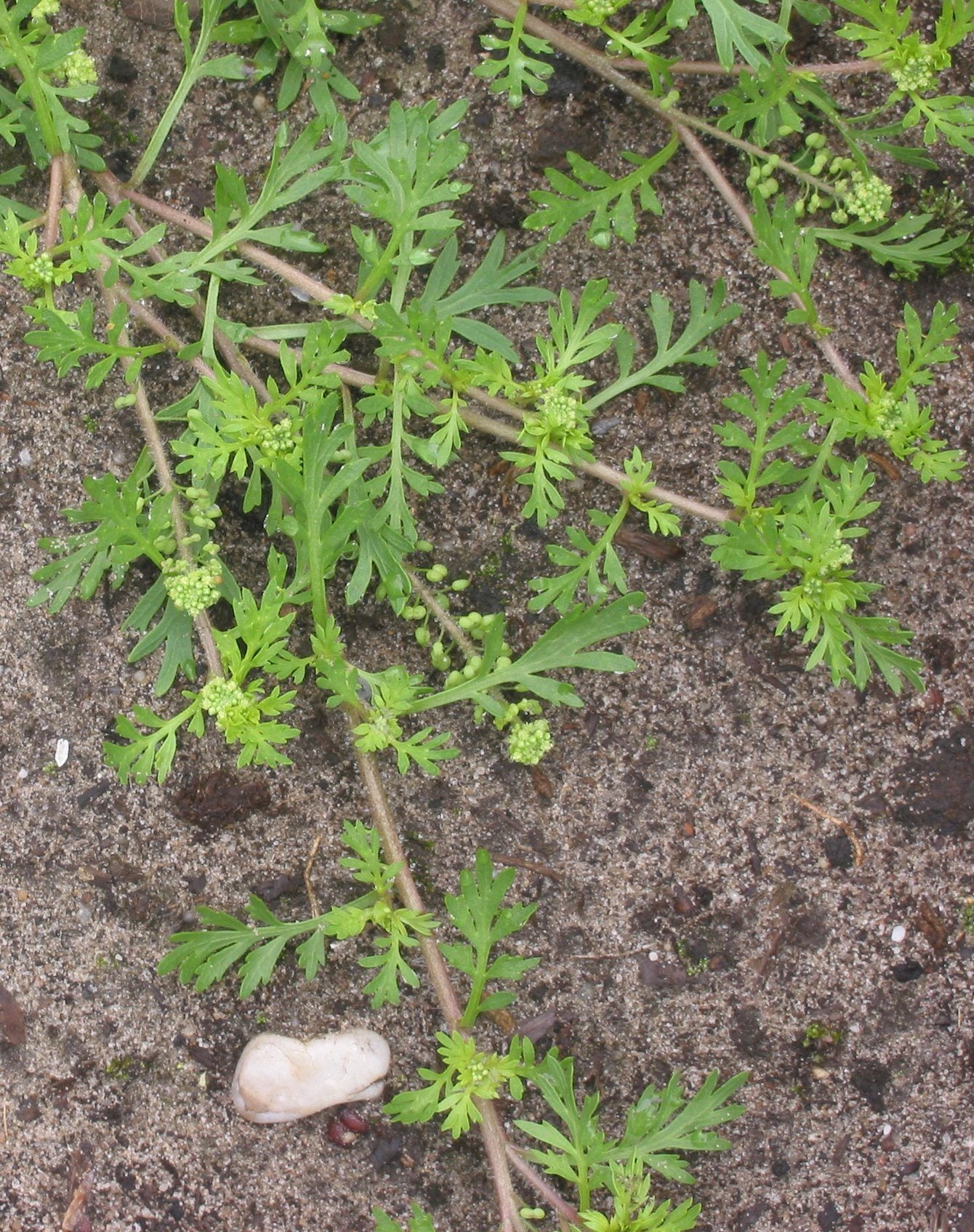Lesser Swinecress Control: Tips For Controlling Swinecress Plants


Swinecress (Coronopus didymus syn. Lepidium didymum) is a weed found throughout much of the United States. It is a persistent nuisance that spreads quickly and smells unpleasant. Keep reading to learn more about how to control swinecress.
Swinecress Identification and Control
Swinecress plants are known by a number of names that include:
- Wild Tansy
- Hogweed
- Blackweed
- Roman Wormweed
- Hay-fever Weed
- Wartcress
- Lesser Swinecress
- Annual Ragweed
Swinecress seedlings can be identified by small, narrow, lace-shaped cotyledons (first leaves) that are followed by larger leaves of the same shape with hairy tips. In the beginning of its life, the plant grows as a rosette with radiating stems of these leaves. As it matures, these stems grow out along the ground, sometimes reaching 20 inches (50 cm) in length, turning up slightly at the tips. The deeply lobed leaves can reach 3 inches (7 cm) in length and are sometimes, but not always, hairy. Tiny white four-petaled flowers form along the stems in clusters. Swinecress weeds are annuals or biennials, depending upon climate. Blooming may take place in the summer, winter, or both, depending upon where you live. Swinecress identification is especially easy due to its strong, unpleasant smell. When the leaves are broken in any way, they produce a pungent, skunky odor.
How to Control Swinecress Weeds
Swinecress reproduces via dropped seed pods, meaning what is a small patch now will likely be a big patch next year. It is most common in worked or tilled soil where other things are trying to grow, like gardens and orchards. It also grows in pastures, and milk from cows that eat it has been known to take on an unpleasant taste. All in all, it’s not usually a welcome sight and should be eradicated if it appears in your garden. That said, swinecress control is tricky, and once the plants are present, they are very difficult to kill off by hand. Herbicide application is really the most effective way to get rid of them.
Sign up for the Gardening Know How newsletter today and receive a free copy of our e-book "How to Grow Delicious Tomatoes".

The only child of a horticulturist and an English teacher, Liz Baessler was destined to become a gardening editor. She has been with Gardening Know how since 2015, and a Senior Editor since 2020. She holds a BA in English from Brandeis University and an MA in English from the University of Geneva, Switzerland. After years of gardening in containers and community garden plots, she finally has a backyard of her own, which she is systematically filling with vegetables and flowers.